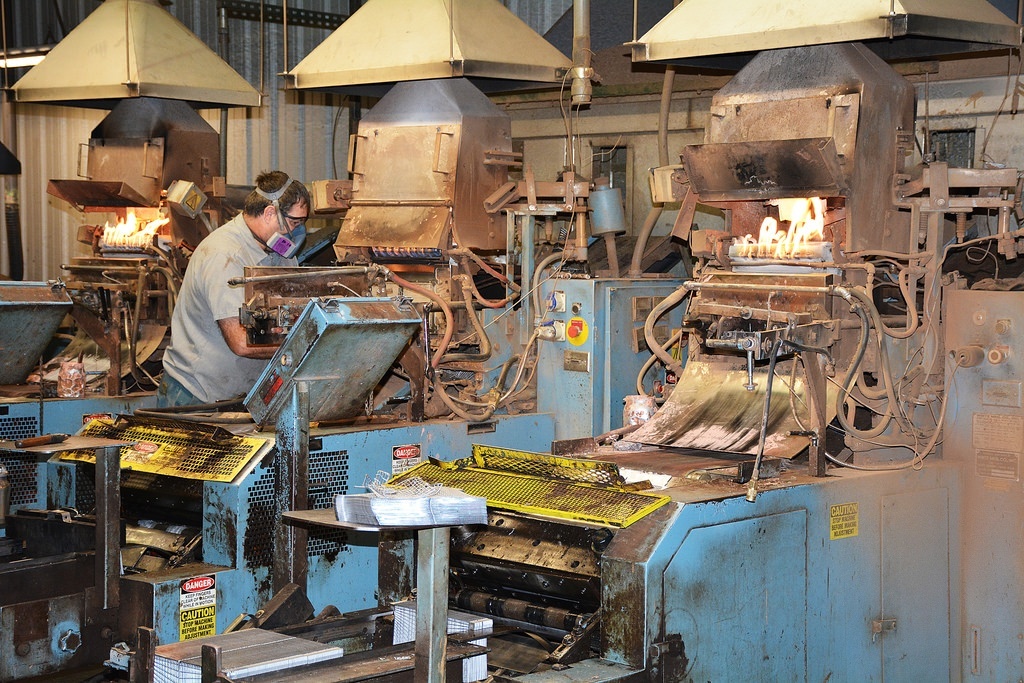2020 has been a challenging year for manufacturing and supply chain. For the first time ever, the entire world was grinded to a halt as COVID-19 has made waves across the globe. On top of COVID-19, there have been protest for racial justice, Australian wildfires, a presidential impeachment, and a dozen other micro challenges that seem to be thrown on top of everything else. As these challenges continue to arise, this has really put a strain on supply chains, especially those within food production.

While these are prevalent and vital issues within the world as of right now, we are mainly going to be focusing on manufacturing challenges. Some of these issues have been around for a period of time – and others have just now begun to show their head. In this blog, we are going to discuss 5 manufacturing industry challenges within 2020 and how they can potentially impact your production facility.
5 Manufacturing Industry Challenges in 2020
The 5 manufacturing industry challenges within 2020 pertain to the following:
- COVID-19 Response – Dealing with the obstacles that have come from COVID-19 have been by far the most substantial obstacles for manufacturers around the globe. COVID-19 has impacted the world through traveling restrictions, sanitary enforcements, and ultimately demand volatility. It’s safe to say, COVID-19 has impacted manufacturing in every possible way. Even with an adequate business plan, it is difficult to come up with a business plan that is able to predict or deal with the variables that come from a pandemic. As some companies have thrived during this time and prepared an adequate response – others were not so lucky and unfortunately have suffered severe drawbacks from the pandemic.
- Increased Reshoring – COVID-19 also brought to light another common topic within manufacturing and supply chain – reshoring. More and more companies are considering reshoring and altering their global manufacturing strategy. Supply chains have been greatly impacted due to their reliability on other countries such as China and offshoring their manufacturing processes. As we make our way through the pandemic, reshoring is becoming a much more commonly discussed option for manufacturing facilities.
- Demand Volatility – During the pandemic and with other obstacles within 2020, demand volatility has been another major concern and challenge. Depending on the facility, demand either shot through the roof or absolutely plummeted, due to the concept of what is considered essential vs. non-essential. Toilet paper, hand sanitizer, masks, and food experienced a dramatic increase in demand when COVID first hit. This demand has now reduced, with the demand for toilet paper dramatically decreasing. Other areas that were not deemed as essential experienced huge drops in demand and put them at risk of going out of business. Coming up with a strategy to deal with these demand changes during the pandemic and for the years to come is a major concern for many manufacturing facilities.
- Automation – While there are many new challenges, there are still some challenges within 2020 that have not changed – one of them being automation. Automation has always been a concept that is debated amongst supply chain individuals for many years. As new technologies and automated equipment are implemented into manufacturing facilities, this potentially puts employees out of a job. COVID-19 has now pushed automation even more as restrictions have hindered how many people can be within a certain space. As we make our way through 2020, automation has been put even more on the map than before.
- Labor Retention – Labor retention is going to be a major challenge for manufacturing facilities. During COVID-19, this could be due to unemployment benefits being more enticing, health concerns, or simply the lack of motivation to work while a pandemic is occurring. This is why finding skilled and motivated workers will be the most important aspect to keep in mind. Try recruiting tactics such as determining minimum qualifications, broadening your search, strategy development, and ultimately focusing on retention.
A software that can quickly change production schedules and ultimately ensure for an agile supply chain is PlanetTogether’s Advanced Planning and Scheduling (APS) Software. Advanced Planning and Scheduling (APS) Software is a must for manufacturing facilities that are struggling with demand volatility, labor variances, and ensuring that their facility is prepared for any changes within COVID-19.
Advanced Planning and Scheduling Software
Advanced Planning and Scheduling (APS) software has become a must for modern-day manufacturing operations due to customer demand for increased product mix and fast delivery combined with downward cost pressures. APS can be quickly integrated with a ERP/MRP software to fill gaps where these system lack planning and scheduling flexibility and accuracy. Advanced Planning and Scheduling (APS) helps planners save time while providing greater agility in updating ever-changing priorities, production schedules, and inventory plans.
- Create optimized schedules balancing production efficiency and delivery performance
- Maximize output on bottleneck resources to increase revenue
- Synchronize supply with demand to reduce inventories
- Provide company-wide visibility to capacity
- Enable scenario data-driven decision making
Implementation of Advanced Planning and Scheduling (APS) software will take your manufacturing operations to the next level of production efficiency, taking advantage of the operational data you already have in your ERP.
Related Capacity Planning Video
APS Resources
Topics: manufacturing technology




















LEAVE A COMMENT